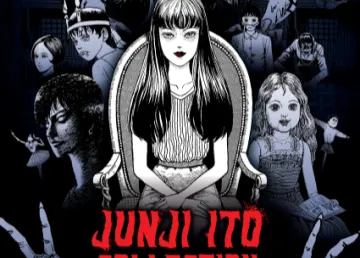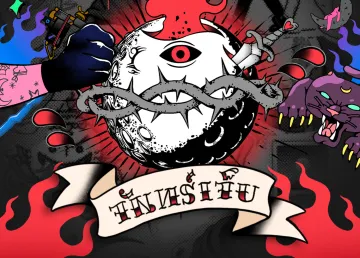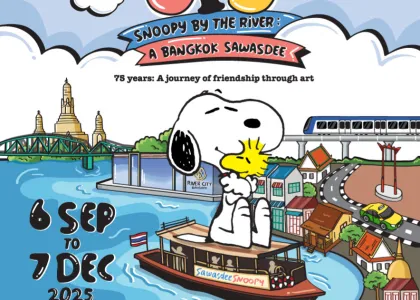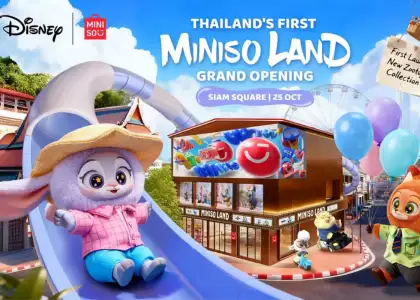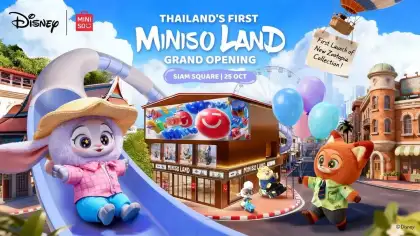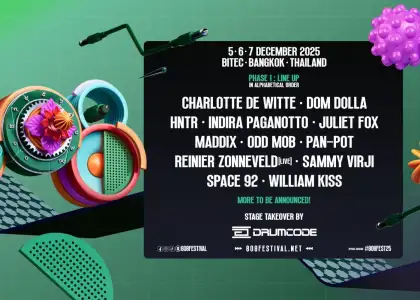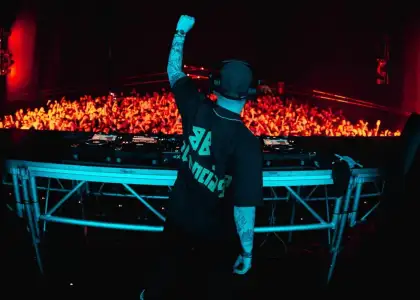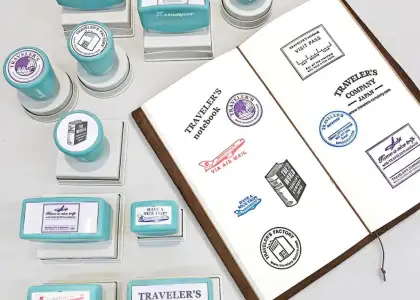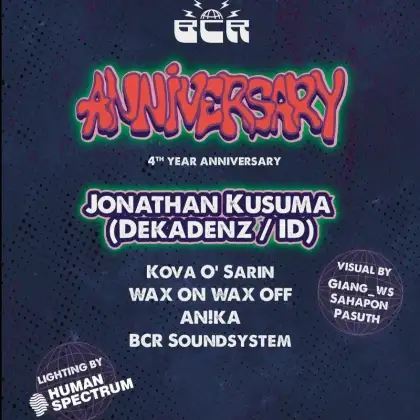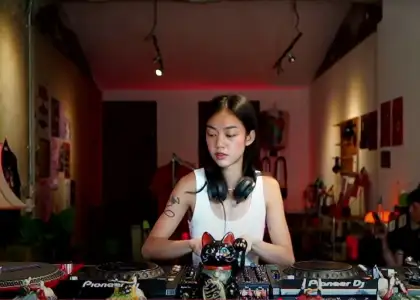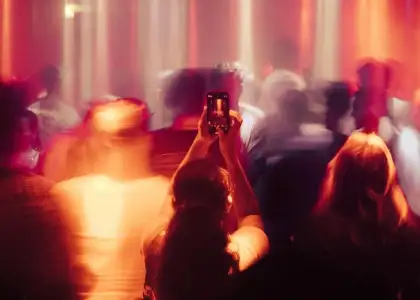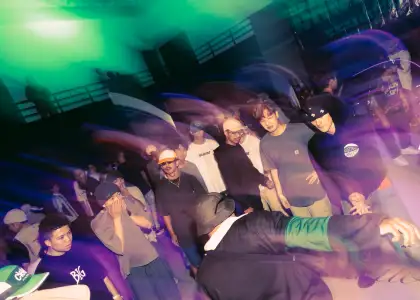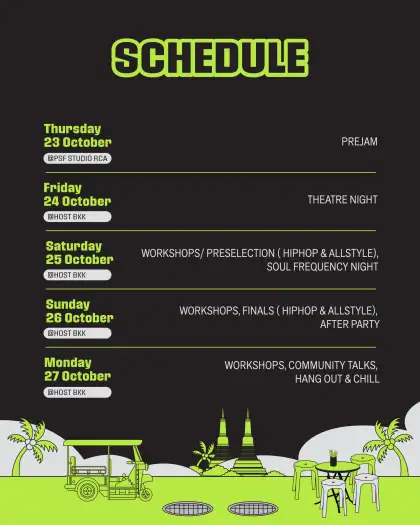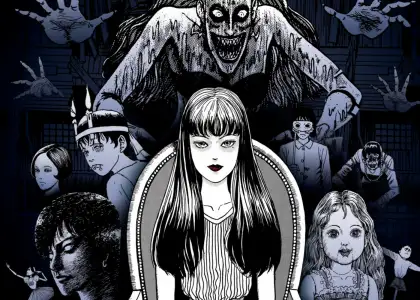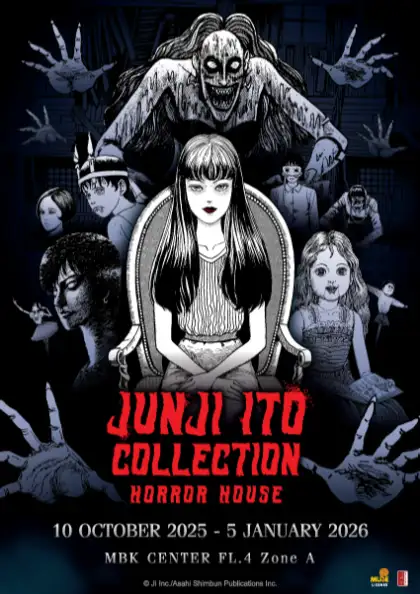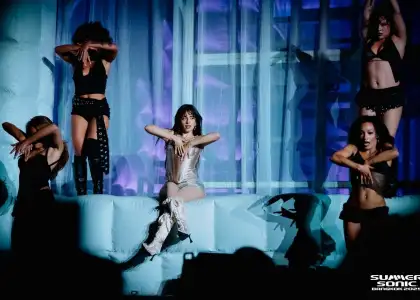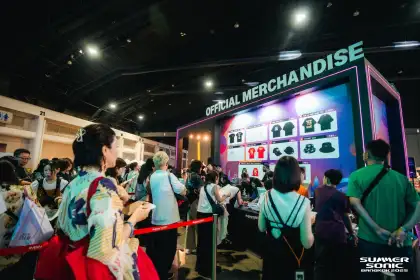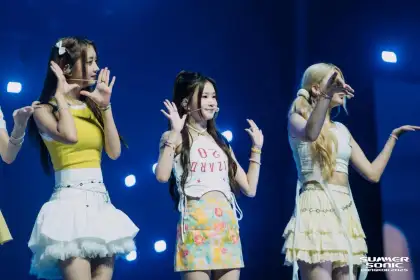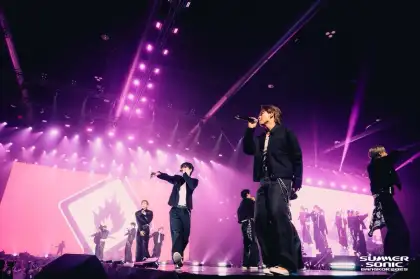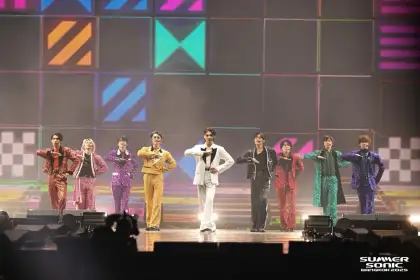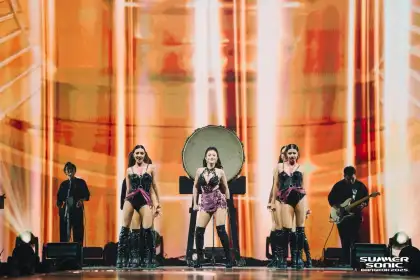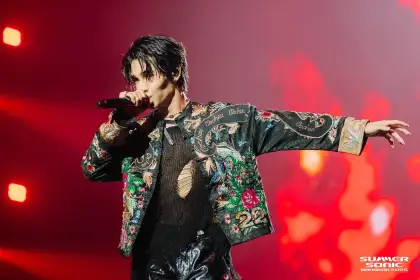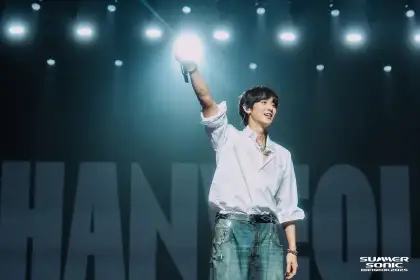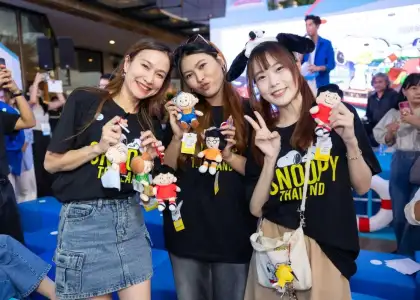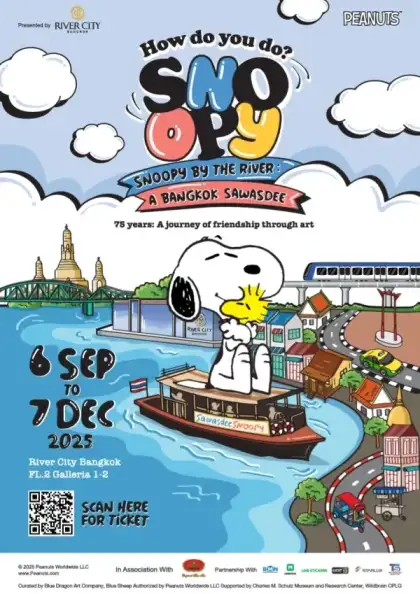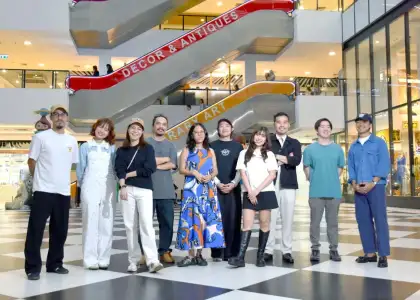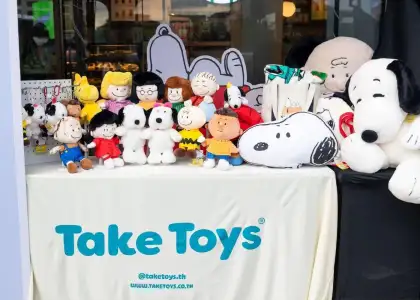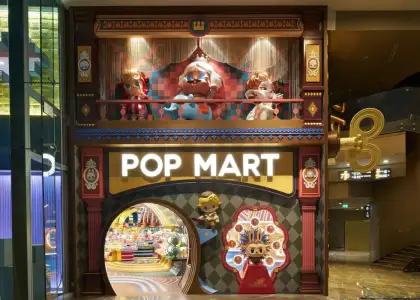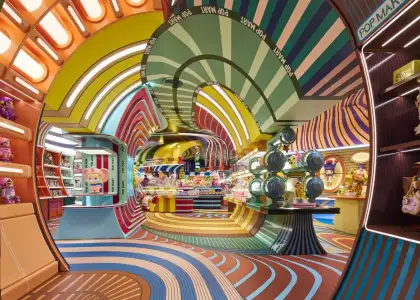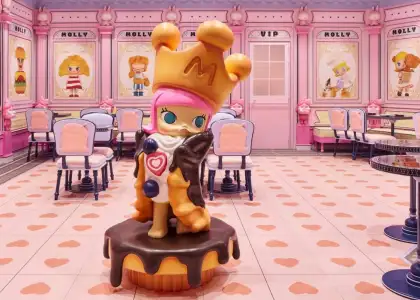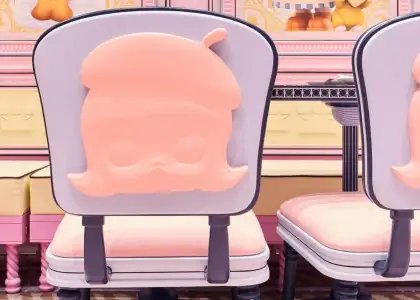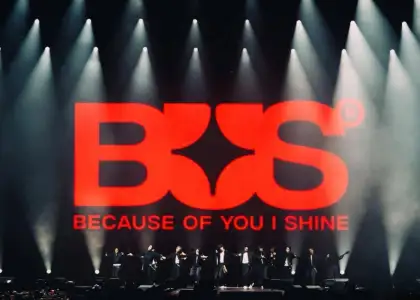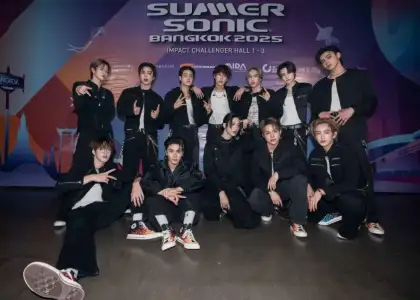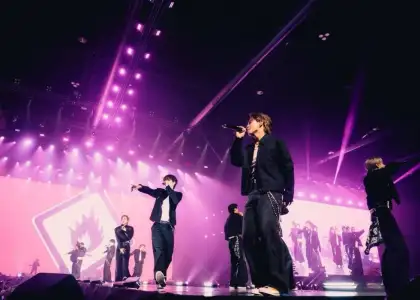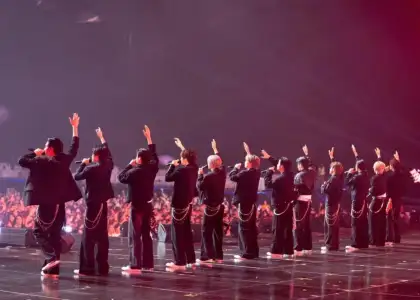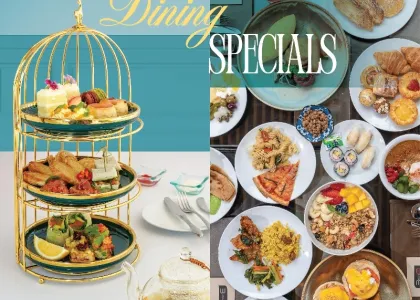Artist 'Juli Baker' Relates Her Sociopolitical Art Journey in Thailand
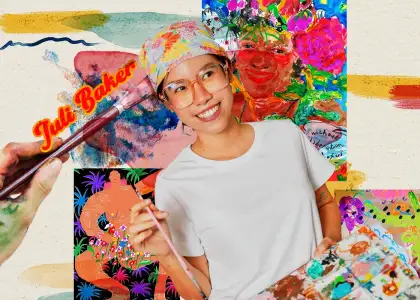
Brimming with youthful energy and feminine prowess, Thai artist Chanaradee Chatrakul Na Ayudhya, or simply Phaan, who also goes by the alias, Juli Baker and Summer, combines vivid and kaleidoscopic imagery in her works to convey various sociopolitical views. Amid the intricacies of society and politics, the vibrant colours of her artworks stand out as she draws inspiration from budding sociopolitical artists.
If you came across her works, you would most likely be reminded of the creations of the French painter Henry Matisse, but with a dash of feminine charm and a flavour of Southeast Asian culture.
Let’s enter the world of Phaan as she explores her strong ethos on sociopolitical art, her creative process, and the importance of championing life as a female artist.
The Tale Behind Her Moniker, ‘Juli Baker and Summer’
Phaan graduated from Chulalongkorn University in Bangkok, where she studied fashion design at the Faculty of Fine and Applied Arts. During the interview, she admitted that she didn’t really enjoy her major, leading her to pursue her interest in the visual arts.
Upon finishing college, her passion for painting and drawing blossomed, and she decided to embark on a career as a freelance artist. She has been exercising her artistic talents as a freelance artist for the past seven years, as of this writing.
During her second year at the university, Phaan became a writer and a columnist for a fashion magazine in Thailand called “Cheeze Magazine.” Like many other artists, she sought a moniker that reflected her unique sense of imagination and originality by combining the names of her favourite characters as her pseudonym.
“I came up with these two names of my favorite characters from the movies that I like, which are Juli Baker from “Flipped” and Summer from “500 Days of Summer.” According to Phaan, these two women both share similar personalities and know exactly what they want in life.
“They are very honest with themselves. [T]hey quite reflect the feelings or the message that I've sent through my art too. Also, I kind of like this name [that’s why] I keep it.”
Fast forward: after she completed her undergraduate studies, Phaan joined her first real-world exhibition together with other emerging artists and designers. It was a group show held in a small underground gallery in Bangkok called Urban Gallery, which has since closed.
Phaan shared that she was able to seize incredible opportunities, such as holding her fifth solo exhibition in May 2023 at the City Art Gallery in Bangkok, for which she produced around 30 paintings.
She told The Beat Asia that her experiences in gallery exhibitions were ones that she would never forget because it feels satisfying for artists like her to get a space to showcase their masterpieces.
“It would be nicer for me to spread [my works] out. [Let] the art do its job by speaking for themselves and letting people interact with or see it interpret it. Also, I feel like I'm very lucky because being an artist in Thailand, I think it's very hard to receive opportunities or space to share. It's such a privilege that I get to know some people and [make] connections to have enough job offers. I really appreciate the opportunities and I try to make the best out of it each time.”
Despite the remarkable nature of such opportunities, Phaan confessed that she also felt an implicit strain attached to these possibilities because nothing in life comes for free, which means that she would have to spend money out of her own pocket if she wanted to take advantage of them.
“It's not quite easy, especially [in] my earlier years [as] an artist to sell the original paintings to clients because the market for art in Thailand is very small. To be honest, only rich people can afford art here, and if you're not a famous male artist, it's so hard to get your work sold here. For most of the shows, I don't get a profit from the paintings, but my main income comes from commercial arts. I decided [to focus on] commission works, but [I still want to exhibit] my arts through galleries to balance my life as an artist [and have the] freedom [to create] my own personal art.”
Exploring Her Creative Muse in Sociopolitical Arts
Discovering the works of English painter David Hockney and Irish painter Henry William Moss paved the way for Juli Baker to learn how to integrate vibrant colours, fluid lines, and child-like symbols into her work. She learned to express profound messages about social and political issues through art that would strongly resonate with her fellow artists and the public alike.
“Both artists are very well known for the choice of colour that they use in their paintings. When I saw their paintings, it inspired me, and it made me feel like, ‘I could do something like this!’ because they're just like telling the stories of their ordinary [lives] but in such a beautiful way.”
When it comes to creating socio-political artworks, Phaan revealed that she has always been interested in politics, despite the overwhelming nature of Thailand’s political arena. She did, however, confess that she “wasn’t really brave enough to talk about [politics]” in her artwork before. The reason for this was the pro-democracy movement that sparked political tensions in Thailand in 2020. As more people joined the street protest, including artists, she “became the activist kind of artist” and felt more confident in talking about politics in her art.
“At the same time, I feel like this is the only tool that I can [use] to support the movement, and I know that I'm good at it. I also believe in the power of art because we all know that in world history, [for] every movement that happens in this world, art has always been part of it. That was when I started to join the movement by creating my art and talking about it through my paintings and my writings.”
“It's not quite a choice. It [was] more like a duty at that time, because I had a lot of friends who got arrested. I know a lot of people [who are being threatened] by the police and soldiers. I feel like this is not only about art [but also] about people —it is about my friends, it's about the [lives] of Thai people. That's the main reason that I am joining the movement.”
Nevertheless, the 29-year-old artist clarified that she has a “bar,” or boundaries, that she would never cross to avoid major conflict.
Art Therapy Workshops and Merchandise
As an artist, maintaining openness to sharing your creations and embracing enriching learning moments is paramount. Attending a workshop hosted by a friend unexpectedly ignited her interest in art therapy. Later on, she led her own art therapy programme with sessions lasting between three and four hours.
“The main concept was freedom of expression. I invited participants to share their thoughts and ideas about how [they] could practice [their] freedom of expression in the country. So, it's more like a talk session too, and I think that art is one of the tools that can heal yourself from being frustrated by the situation or [when] you get tired from politics and everything around you.”
Juli Baker and Summer’s creative odyssey does not end there, as she also demonstrates her talent by hand-painting her designs onto a variety of merchandise, such as bags, tumblers, shirts, and more.
Crafting Life as an Artist
When it comes to her creative process, she ensures that she has sufficient time for researching, writing, and sketching, particularly when it comes to gallery shows.
“I would like to jump into the whole concept and see every corner of it. And then I would come back and write it down and see what I wanted to talk about, and how I [could] talk about it.”
Moreover, she collaborated with big brands, including a mural for Converse Thailand and working with Wolf Magazine, Top Shop, Nike, and more. So far, Phaan’s artistic career has been quite smooth-sailing.
For the upcoming generation of creatives, she wants to remind them to keep a passionate heart, an honest mind, and remain firmly rooted in reality.
“I think you have to be crazy about something enough. Be honest with yourself when you do your [artwork]. Please be aware that I'm the type of person who also has a bit of privilege. I was born into a very supportive family. So, every path for artists is different. We couldn't say that people who work hard enough will always [be successful] because it depends on the family that you were born into, the [level of] freedom of expression in the country that you were living in, [and other] conditions that each artist has to get through. I think just to be able to create art every day and to enjoy doing it, that's already good enough.”
When asked what's the most fulfilling part of being an artist, she believes that it’s when people feel something about her creations.
“It's always nice to hear that your art can move people's hearts. Like my recent solo show, [featuring] my recent book, which is called “Everywhere Girl.” It was a type of art project [where] I tell a very personal story or experience through the arts, and it’s very emotional. So, when people come to me and they can relate it to their own story, it really feels like, this is the reason [why] I still want to [pursue] art.
Get the latest curated content with The Beat Asia's newsletters. Sign up now for a weekly dose of the best stories, events, and deals delivered straight to your inbox. Don't miss out! Click here to subscribe.



